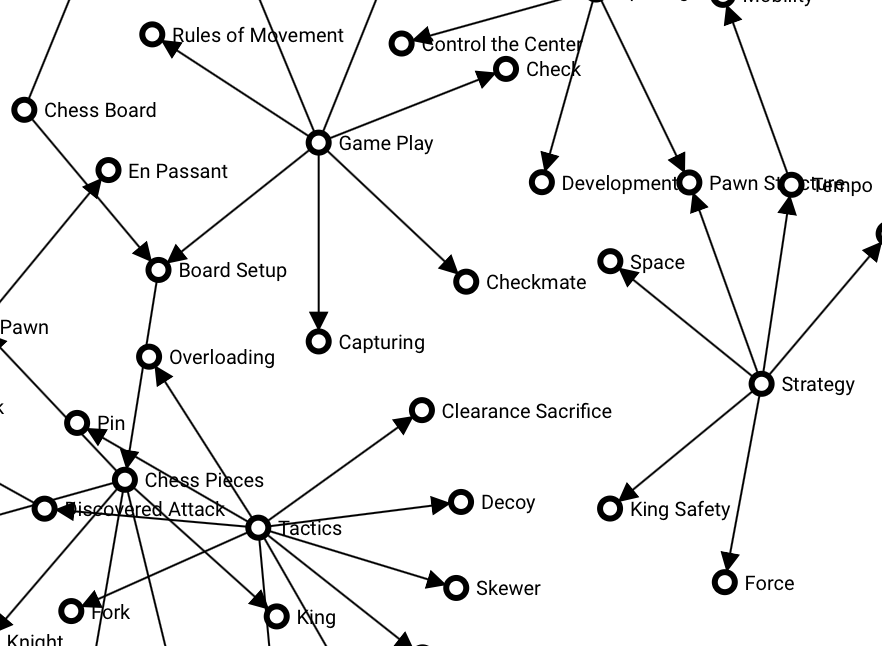
Over the last half-century, a number of educational ideas have become popular to help educators organize and plan out their lessons. Most importantly has been the movement to specify operationally what you expect your students to be able to do when they have mastered the concepts that you are teaching. Operational definitions remove much of the vagueness from educational rubrics (or the standards of education), but the process of defining what needs to be taught is still very much an art.
Some tools, such as Mind Maps, have gained ground as a way for educators to organize their thoughts and for students to organize their notes, but the rules for creating these Mind Maps are still very open. Most times Mind Maps are loosely connected ideas around a particular topic. They don't actually define the structure of the knowledge that is being learned. They do not create a Knowledge Matrix™, which is a map of the structure of the knowledge that a student is trying to understand.
Why is it important to structure educational content as a Knowledge Matrix? The process of learning, in a nutshell, is the process of converting raw information from the environment to an organized representation in our mind. Our mind organizes these concepts into generalized ideas, or definitions, and then attaches specific instances, or examples, to those generalizations.
As educators, it is our job to lead students to create those connections so that they can internalize the knowledge for themselves.
We are used to learning from narratives – basically stories written by educators that try to explain or teach a subject. Pick up any textbook and it will contain descriptions, examples, and questions to test your knowledge. The content is organized linearly in the way that the author thinks the content should be learned.
The student's job is the follow the plan, often with the help of a teacher who lectures or provides some other classroom environment and to convert all of this information into beautifully clear semantic representations in their mind.
That job is often very difficult – made ever more so by missing concepts, unclear descriptions, long-winded explanations (which you are basically "forced" to follow in a particular order), and limited resources.
This is where Knowledge Avatars comes in.
A Knowledge Avatar is a representation of expert knowledge on a particular topic. Since it is on the Internet, its size or access to resources is essentially limitless.
From an educator's perspective, Knowledge Avatars make it easy to develop content in a non-linear fashion. You don't have to worry about the order of things, what comes first, which is more important, etc. Just define concepts as they pop into your head. It's as easy as that. Then, after concepts are defined, examples can be added, prerequisites can be specified, and some kind of order can be given to the concepts. Furthermore, because you don't have to worry about writing a narrative you can easily add content as you realize that there are gaps in the Knowledge Matrix. Adding concepts and showing their relationship to other concepts is easily done. It is an object-oriented approach to courseware development.
From a student's perspective, you can learn as much or as little as you wish. You can dig deep into the content or only learn the things that interest you. The prerequisites are clearly shown in the Knowledge Matrix so you can choose to review the prerequisite concepts or, if you feel you know them, just skip them. You can always review them later if needed. Also, you can take as much time, or as little time, as you like to learn. Just learn a few concepts when you have the time or delve in for hours of learning. It is your choice!
Power to the student! Enjoy!